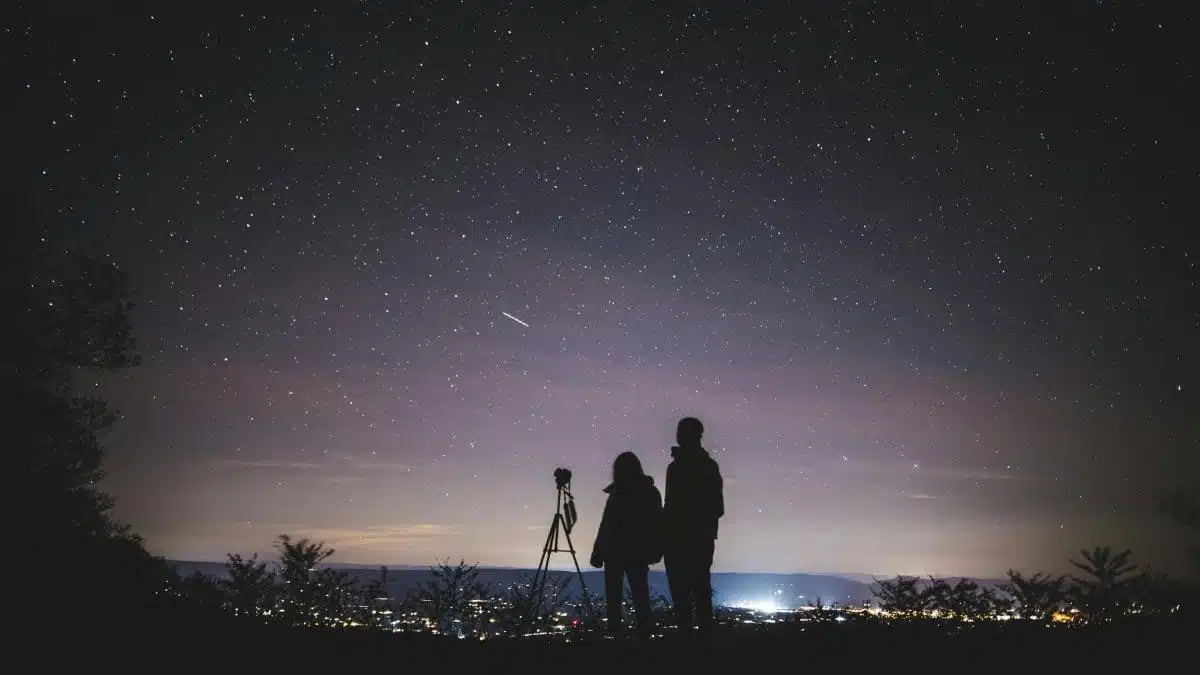Stargazing offers a unique blend of romance and wonder, providing an unparalleled backdrop for unforgettable nights under the cosmos. Across the globe, certain destinations stand out for their pristine skies, minimal light pollution, and breathtaking celestial views. This guide curates ten of the world’s most enchanting stargazing spots, each promising a romantic and awe-inspiring experience. From remote deserts to high-altitude observatories, these locations offer clear, unobstructed night sky views, making them perfect for couples seeking a tranquil escape or a moment of connection with the universe. Whether you’re an astronomy enthusiast or simply looking for a magical setting to share with someone special, these destinations provide the perfect stage for a night of stargazing and romance.
1. Atacama Desert, Chile
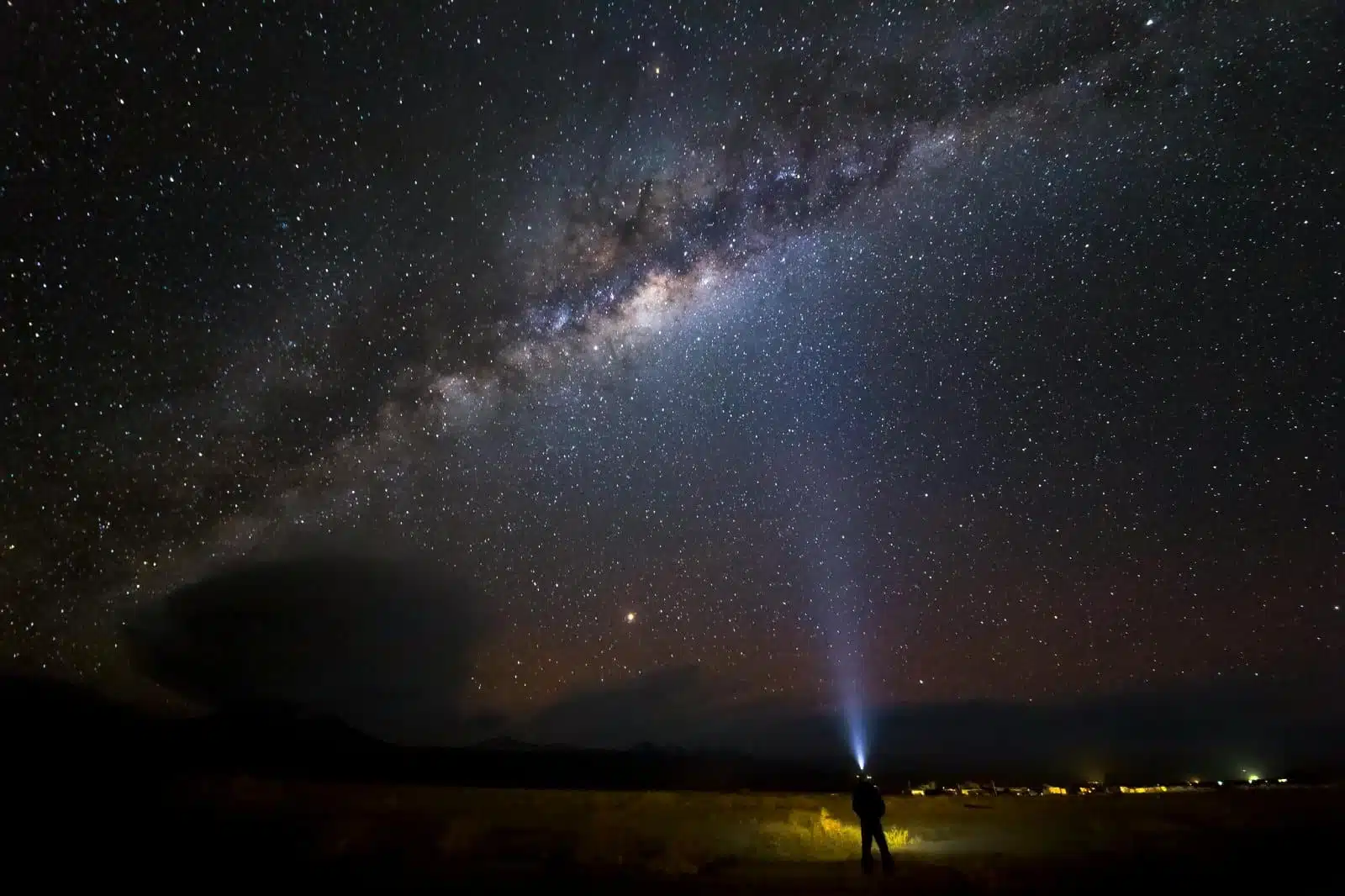
Image Credit: Pexels / Erike Fusiki
The Atacama Desert, one of the driest places on Earth, offers some of the clearest skies for stargazing. Its high altitude, stable climate, and minimal light pollution create ideal conditions for observing the stars. The desert landscape, with its otherworldly terrain, adds to the mystique and allure of the night sky. Several observatories in the area, including the Paranal Observatory and ALMA, offer guided tours, allowing visitors to look deeper into the cosmos through state-of-the-art telescopes. The Milky Way stretches brightly across the sky, and celestial phenomena like nebulas and distant galaxies are visible to the naked eye.
Insider’s Tip: Book a stargazing tour with a local astronomy group for a guided experience. These tours often include telescopic viewing and insights into the constellations and celestial events visible during your visit.
When to Travel: The best time for stargazing in the Atacama Desert is during the Southern Hemisphere’s winter (June to September), when the skies are clearest.
How to Get There: Fly into Calama Airport from Santiago, Chile. It’s about a two-hour drive from Calama to the heart of the Atacama Desert. Renting a car or joining a tour is recommended for reaching the best stargazing spots.
2. Mauna Kea, Hawaii, USA
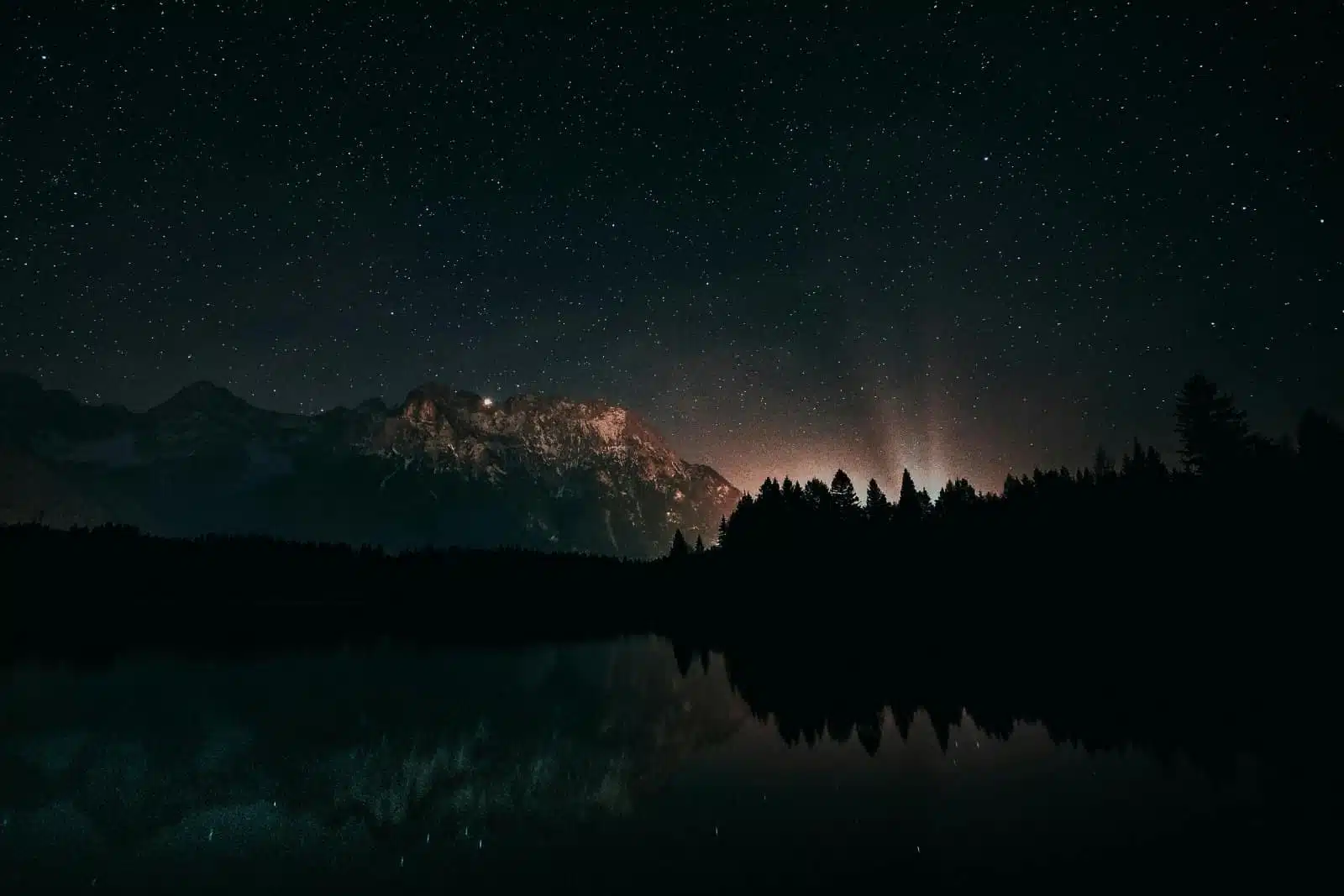
Image Credit: Pexels / eberhard grossgasteiger
Mauna Kea, a dormant volcano on Hawaii’s Big Island, hosts the world’s largest astronomical observatory. At nearly 14,000 feet above sea level, it’s among the best places on Earth for astronomical observation. The summit’s dry atmosphere and stable weather patterns provide crystal-clear views of the night sky. Visitors can join stargazing programs at the Mauna Kea Visitor Information Station, where telescopes are set up for public use, offering a glimpse into the depths of space. Unobstructed by light pollution, the sight of countless stars, planets, and the Milky Way makes for a truly romantic and awe-inspiring experience.
Insider’s Tip: Acclimate to the altitude by spending time at the Visitor Information Station before heading to the summit for stargazing. The change in elevation can be challenging for some.
When to Travel: The dry season, from April to October, offers the clearest conditions for stargazing on Mauna Kea.
How to Get There: Fly into Hilo or Kona International Airport on the Big Island of Hawaii. From there, it’s a drive to Mauna Kea. Access to the summit requires a four-wheel-drive vehicle and a careful ascent to adapt to the high altitude.
3. NamibRand Nature Reserve, Namibia
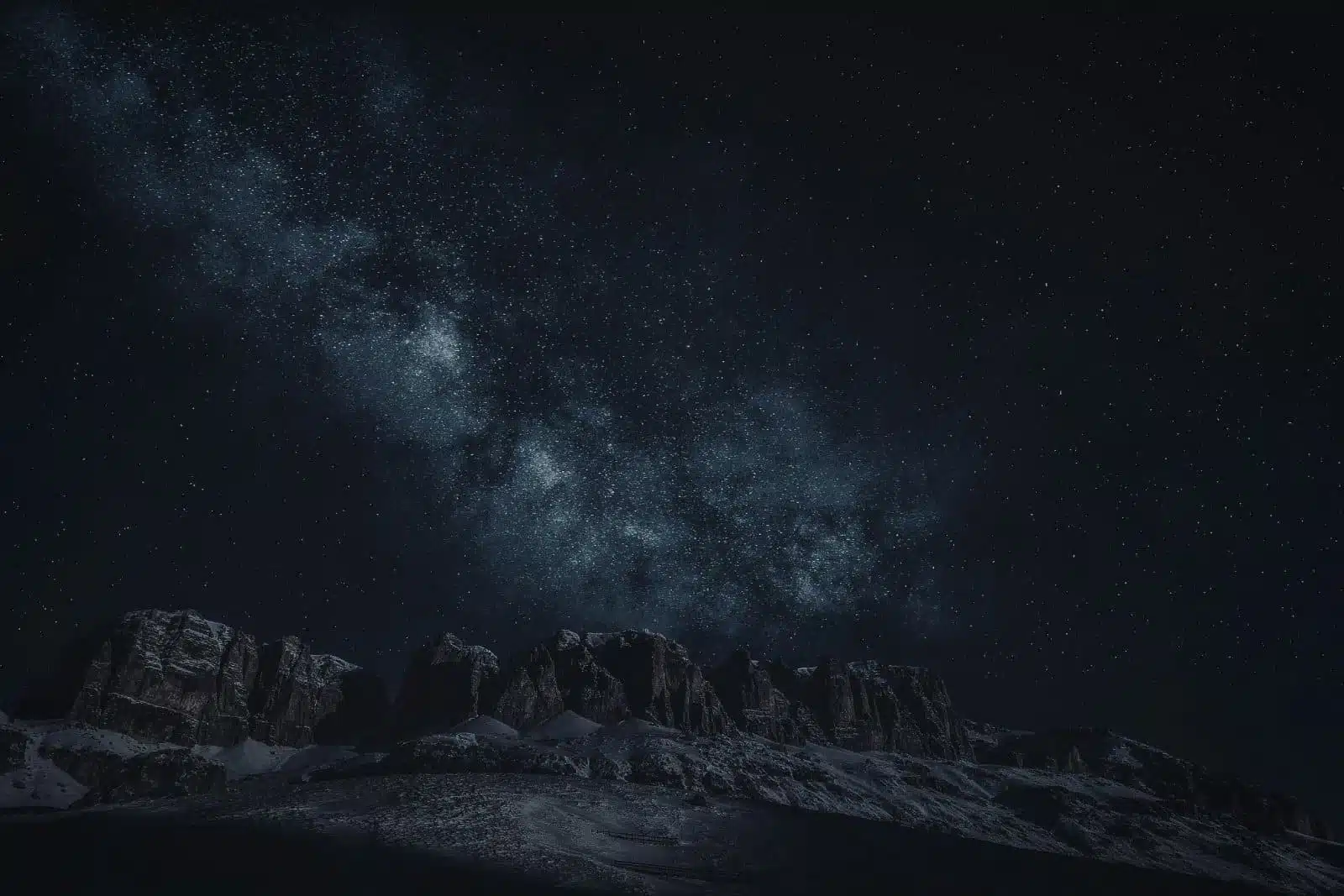
Image Credit: Pexels / eberhard grossgasteiger
NamibRand Nature Reserve, one of Africa’s largest private nature reserves, is a designated International Dark Sky Reserve. Its isolation from urban light pollution and clear, dry skies make it an exceptional location for stargazing. The reserve offers a unique backdrop of rolling dunes and desert landscapes, enhancing the experience of observing the celestial spectacle above. Visitors can enjoy guided night walks and stargazing sessions, where the splendor of the Milky Way and distant planets and galaxies can be observed in stunning clarity.
Insider’s Tip: Stay at one of the reserve’s eco-friendly lodges, where you can enjoy stargazing from the comfort of your accommodation, often equipped with skylights or private decks.
When to Travel: The best time to visit NamibRand for stargazing is during the dry season, from April to September, when skies are most clear.
How to Get There: The closest major airport is in Windhoek, the capital of Namibia. It’s a scenic drive from Windhoek to NamibRand Nature Reserve, with car rental or shuttle options available.
4. Tenerife, Canary Islands, Spain
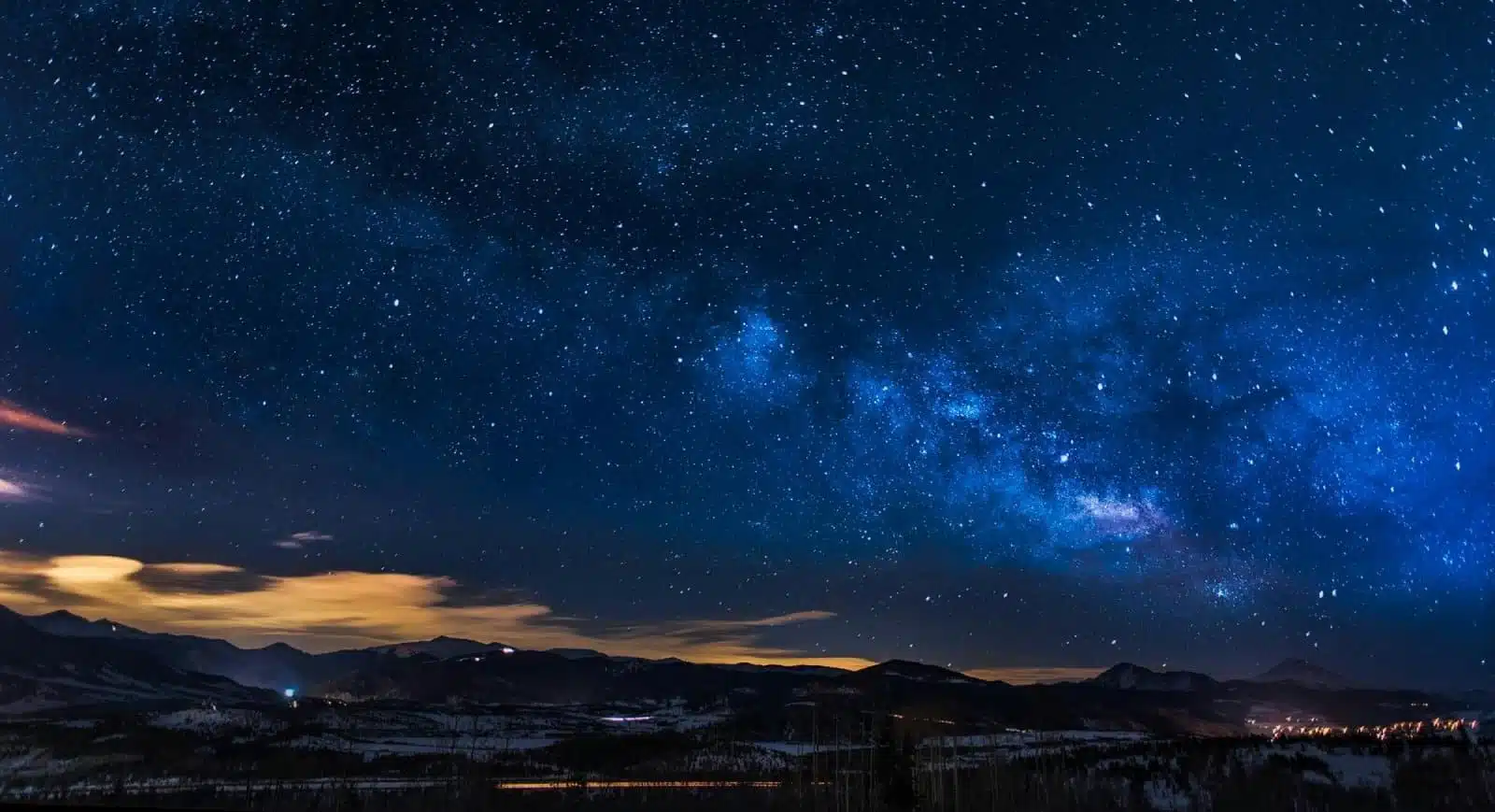
Image Credit: Pexels / Pixabay
Tenerife, the largest of Spain’s Canary Islands, is renowned for its exceptional stargazing conditions, thanks to its high altitude, clear skies, and strict light pollution laws. The Teide National Park, home to Mount Teide, Spain’s highest peak, offers guided night tours and astronomical observatories open to the public. The park’s unique landscape of volcanic rock and the vast Atlantic Ocean horizon make for a dramatic setting to observe the stars. Stargazers can enjoy breathtaking views of the Milky Way, meteor showers, and various constellations, making it a perfect destination for a romantic night under the stars.
Insider’s Tip: Participate in a guided stargazing tour at Teide Observatory to learn about the constellations and use professional telescopes to closely examine the stars.
When to Travel: Summer (June to August) provides warm nights and clear skies, ideal for stargazing in Tenerife, though the island enjoys good conditions year-round.
How to Get There: Fly into Tenerife South Airport, which serves international and domestic flights. Teide National Park is accessible by car, with various tour operators offering transportation to stargazing events.
5. Lake Tekapo, New Zealand
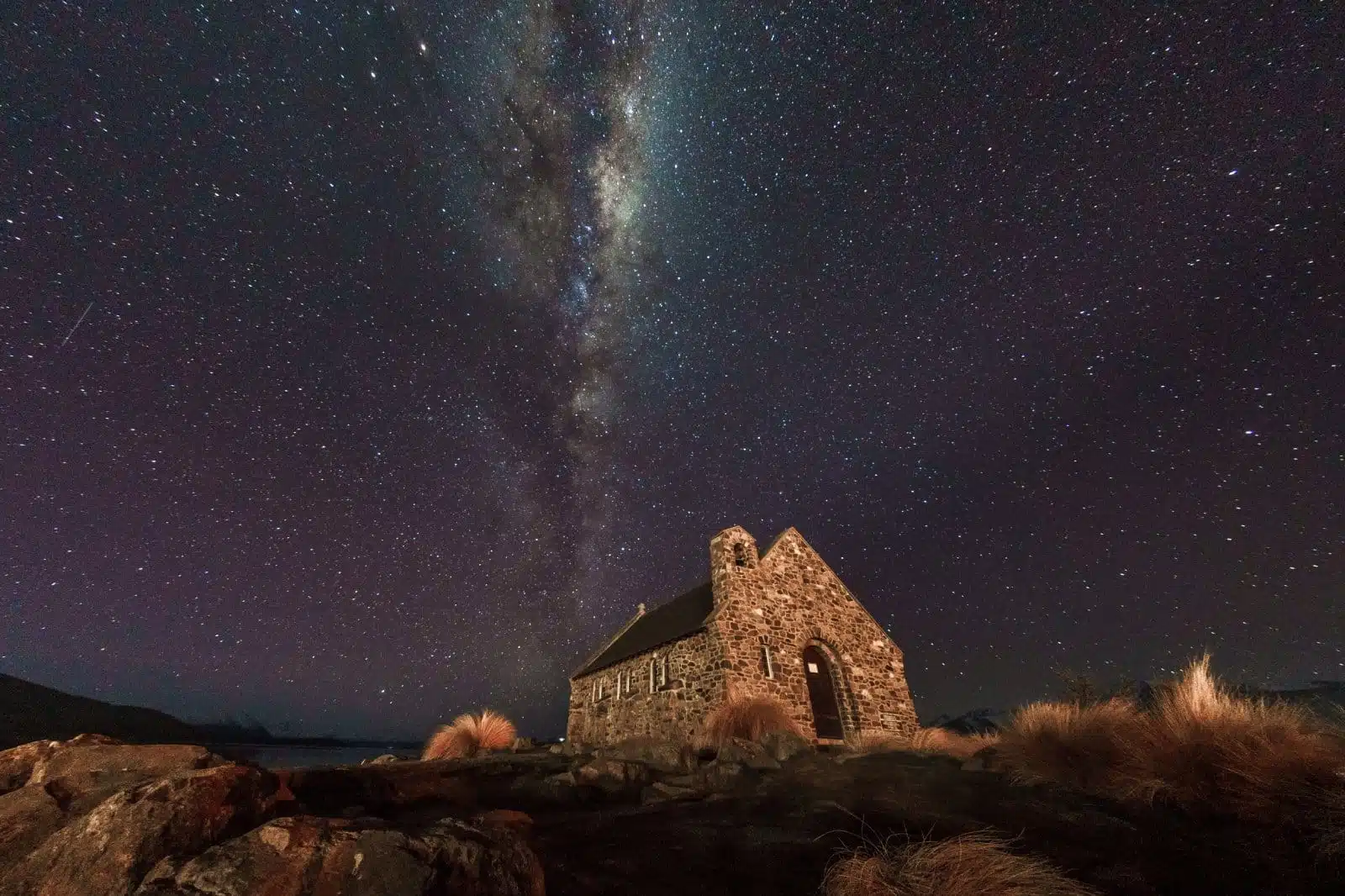
Image Credit: Shutterstock / Fadhlur Rahman
Lake Tekapo, located in the heart of New Zealand’s South Island, lies within the Aoraki Mackenzie International Dark Sky Reserve, one of the largest dark sky reserves in the world. The area’s remote location, high altitude, and clear skies offer unparalleled views of the southern stars, including the Southern Cross, Magellanic Clouds, and the Milky Way. The Church of the Good Shepherd, on the shores of Lake Tekapo, provides a picturesque foreground for night photography and stargazing. The nearby Mount John Observatory offers night tours, allowing visitors to explore the cosmos through powerful telescopes.
Insider’s Tip: For a unique experience, visit during the Southern Hemisphere’s winter (June to August) to witness the spectacular Aurora Australis, or Southern Lights, along with the starry sky.
When to Travel: The clear, cold nights of the Southern Hemisphere’s winter months offer the best conditions for stargazing at Lake Tekapo, though the region offers good visibility year-round.
How to Get There: Christchurch International Airport is the nearest major airport. Lake Tekapo is a three-hour drive from Christchurch, with car rental options available at the airport.
6. Jasper National Park, Canada
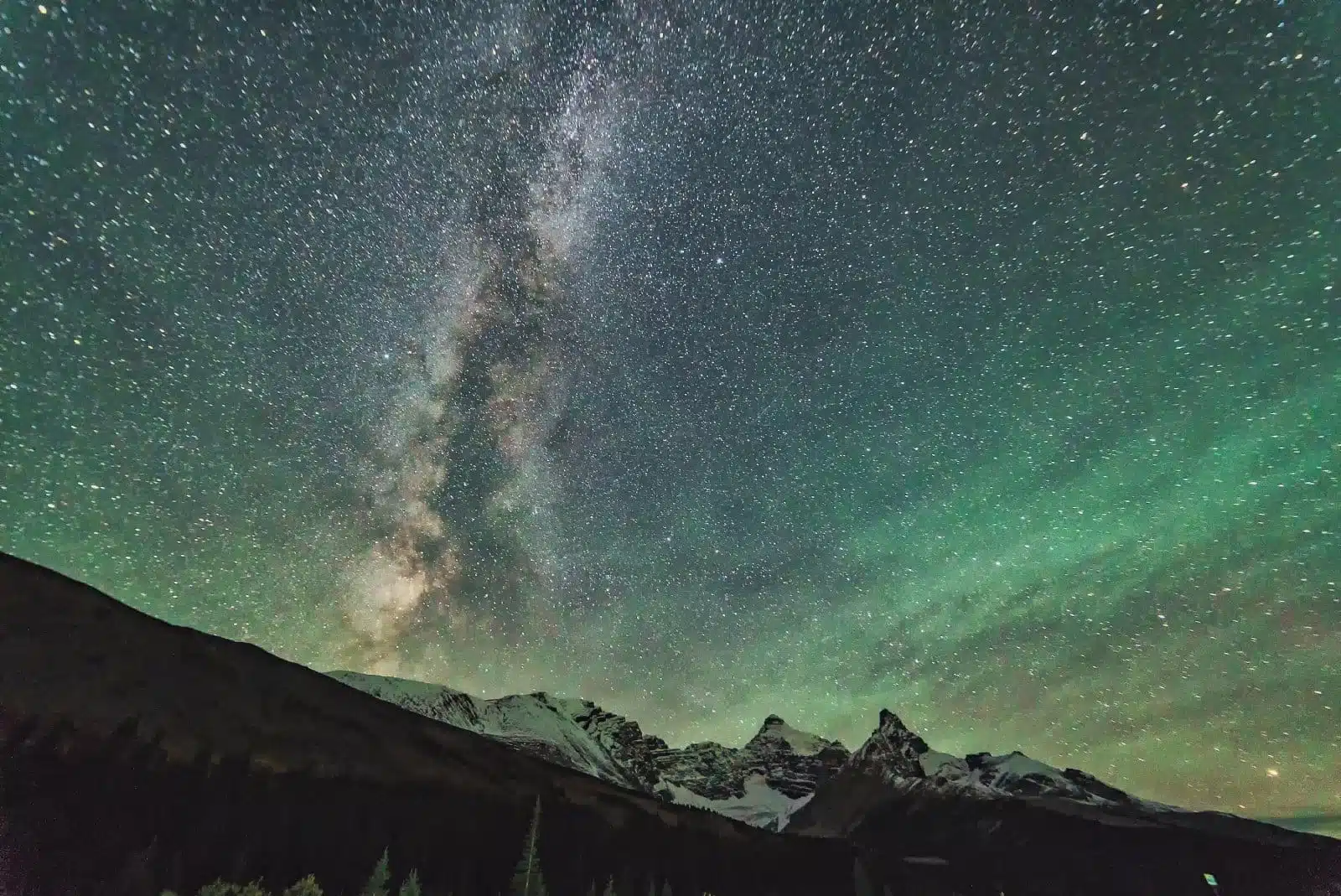
Image Credit: Shutterstock / Ambrose Fung
Jasper National Park, located in the Canadian Rockies, is one of the world’s largest accessible dark sky preserves. This designation ensures the park remains free of artificial light pollution, offering visitors spectacular views of the Milky Way, meteor showers, and auroral displays. The park hosts an annual Dark Sky Festival featuring astronomy experts, telescope experiences, and night photography workshops. The natural beauty of Jasper, with its rugged mountains and crystal-clear lakes, adds an unparalleled natural backdrop to the celestial display overhead.
Insider’s Tip: For an unforgettable experience, visit during the Jasper Dark Sky Festival in October. The festival offers unique events, such as planetarium shows and guided stargazing walks, enhancing the stargazing experience.
When to Travel: While Jasper offers excellent stargazing year-round, October and April are particularly noteworthy for the Dark Sky Festival and optimal viewing conditions for the Northern Lights, respectively.
How to Get There: Jasper is accessible by car from Edmonton, Alberta, the nearest major city with an international airport. The drive takes approximately 4 hours, traversing scenic routes through the Canadian Rockies.
7. Sedona, Arizona, USA
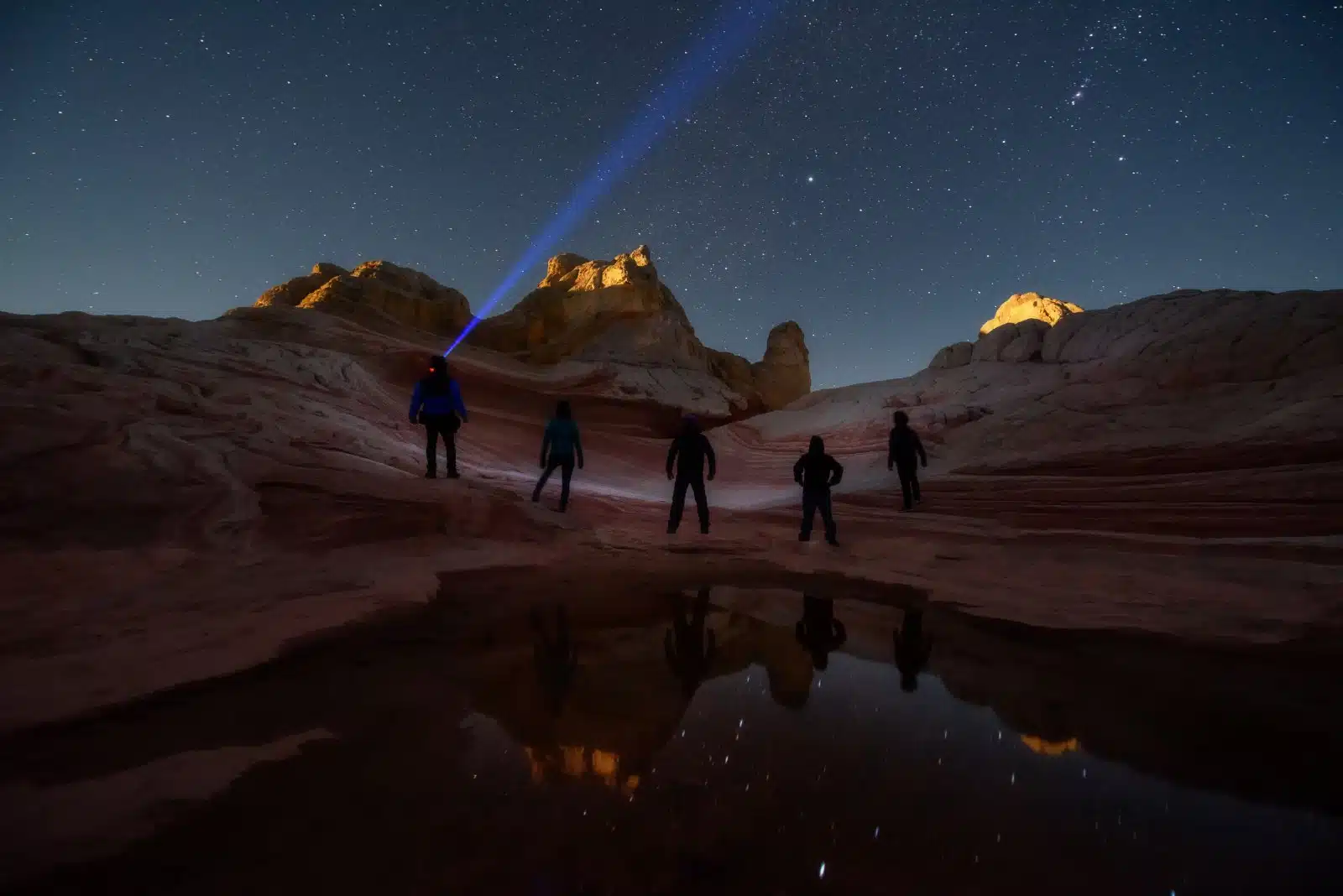
Image Credit: Shutterstock / Wisanu Boonrawd
Sedona is renowned for its stunning red sandstone formations and as a Dark Sky Community, where efforts to reduce light pollution have enhanced the night sky’s visibility. The high desert altitude and clear, dry air contribute to consistently good stargazing conditions. Several local companies offer night sky tours, utilizing high-powered telescopes to view planets, star clusters, and galaxies. Sedona’s vortex sites, considered centers of energy conducive to healing, meditation, and self-exploration, add a unique spiritual dimension to its stargazing experience.
Insider’s Tip: Combine a stargazing tour with an evening of meditation or yoga at one of Sedona’s vortex sites for a truly spiritual and romantic experience under the stars.
When to Travel: Spring (March to May) and fall (September to November) offer the most comfortable weather for nighttime stargazing in Sedona, with clear skies and mild temperatures.
How to Get There: Sedona is about a 2-hour drive from Phoenix Sky Harbor International Airport. Car rentals are available at the airport, providing the most flexibility for exploring Sedona’s stargazing spots.
8. La Palma, Canary Islands, Spain
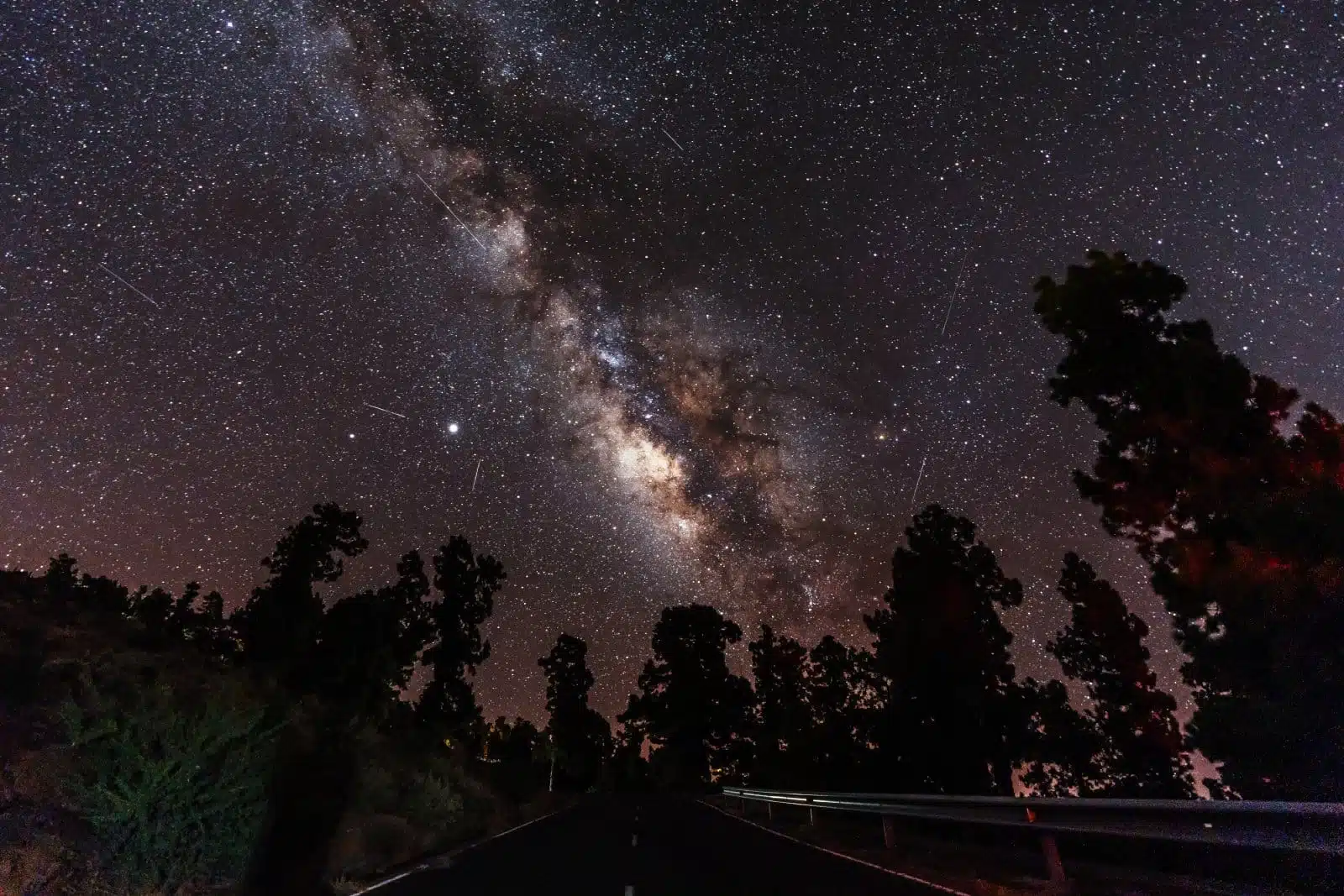
Image Credit: Shutterstock / Unai Huizi Photography
La Palma, known as “La Isla Bonita” (The Beautiful Island), is another gem in the Canary Islands for stargazing. Its strict light pollution laws and the establishment of the Roque de los Muchachos Observatory underscore the island’s commitment to preserving the night sky. La Palma’s high peaks and clear skies offer unobstructed views of the stars, making it a favorite among amateur astronomers and couples seeking a romantic stargazing getaway. The observatory, one of the world’s leading facilities for astronomical research, occasionally opens its doors to the public for night sky tours.
Insider’s Tip: For a truly immersive experience, book a stay at one of the island’s “astro-tourism” accommodations, where you can enjoy equipped observatories and telescopes directly from your lodging.
When to Travel: The summer months (July to September) are ideal for stargazing in La Palma, with the most stable weather conditions and several meteor showers visible.
How to Get There: La Palma has its own airport, with flights available from mainland Spain and other Canary Islands. The Roque de los Muchachos Observatory is accessible by road, though a guided tour is recommended for first-time visitors.
9. The Sahara Desert, Morocco
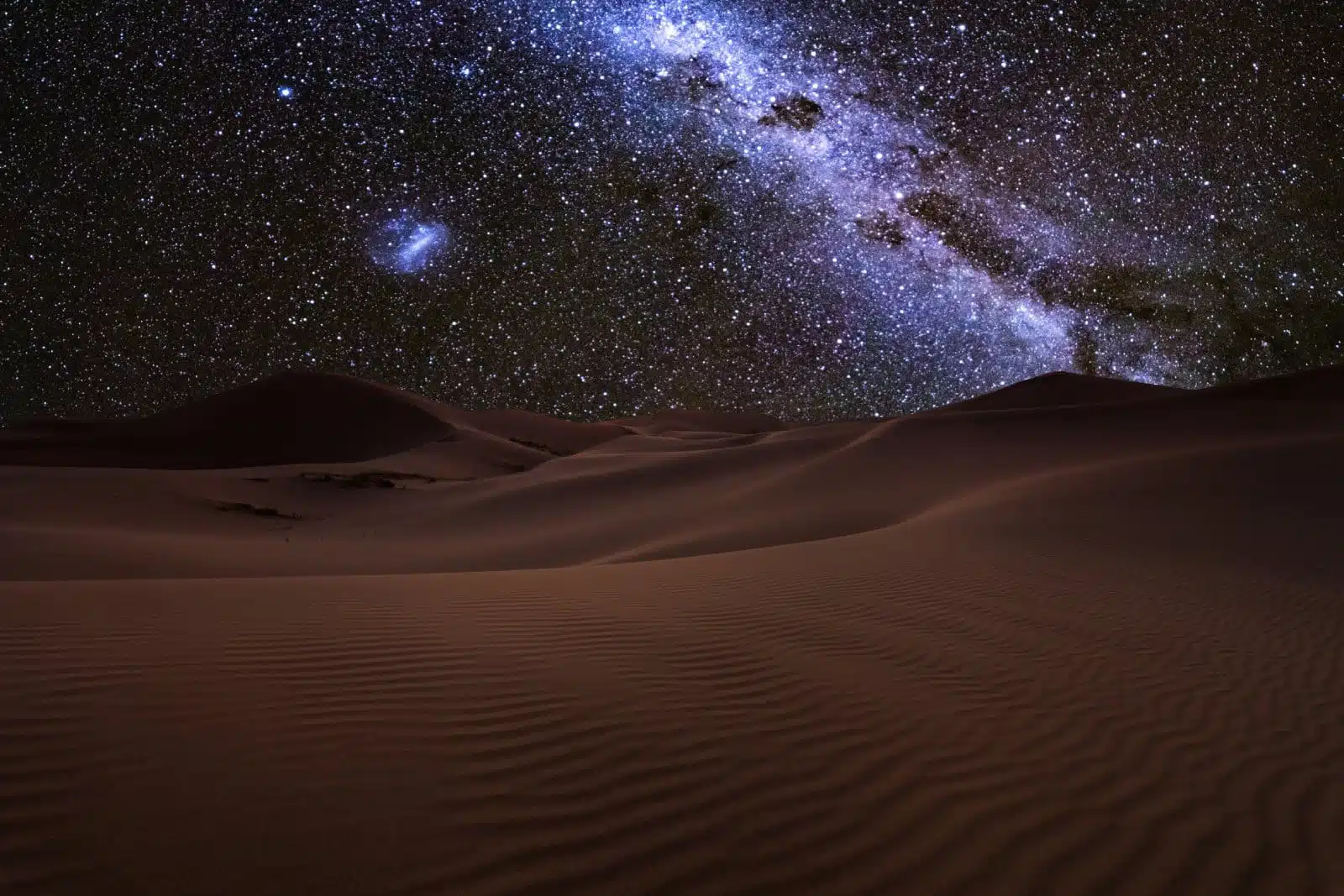
Image Credit: Shutterstock / fogcatcher
The vast expanse of the Sahara Desert offers one of the most dramatic settings for stargazing. The desert’s remote location, far from light pollution and atmospheric disturbances, provides pristine conditions for observing the night sky. Visitors can embark on a desert safari that includes an overnight stay in a traditional Berber tent, offering a unique opportunity to witness the breathtaking beauty of the stars and Milky Way in complete solitude.
Insider’s Tip: Opt for a guided tour that includes an overnight desert camp experience. The silence and scale of the Sahara at night, under a canopy of stars, is an unforgettable experience.
When to Travel: The best time to visit the Sahara for stargazing is during the cooler months, from September to April, when the night skies are clearest and the temperatures are more comfortable.
How to Get There: The most accessible part of the Sahara for tourists is near Merzouga, Morocco. Fly into Marrakech or Fes, and from there, join a guided tour or rent a car for the journey to the desert.
10. Coonabarabran, New South Wales, Australia
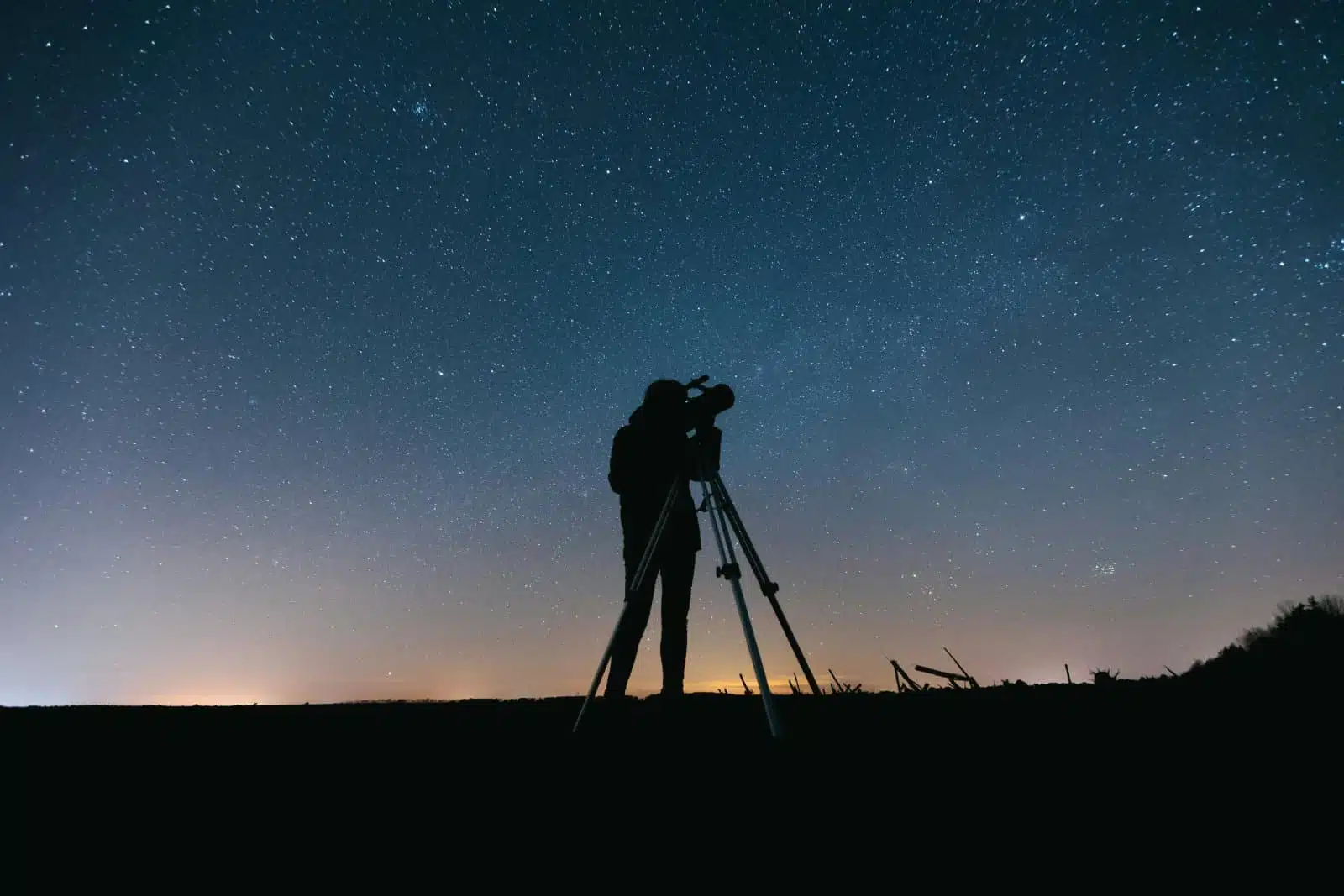
Image Credit: Pexels / Thirdman
Dubbed the “Astronomy Capital of Australia,” Coonabarabran in New South Wales is home to the Siding Spring Observatory, Australia’s premier optical and infrared astronomical observatory. The surrounding Warrumbungle National Park is the country’s first Dark Sky Park, offering spectacular stargazing opportunities free from light pollution. The park’s dramatic volcanic landscapes provide a stunning foreground for viewing the Southern Hemisphere’s celestial wonders, including the Southern Cross, the Magellanic Clouds, and the Milky Way.
Insider’s Tip: Visit during the StarFest event in October, which includes open days at the Siding Spring Observatory, science talks, and stargazing parties.
When to Travel: The clear winter months (June to August) offer the best stargazing conditions, with crisp skies and minimal cloud cover.
How to Get There: Coonabarabran is approximately a 5-hour drive from Sydney. The closest regional airport is in Dubbo, about a 2-hour drive from Coonabarabran, with car rental options available.
The Bottom Line
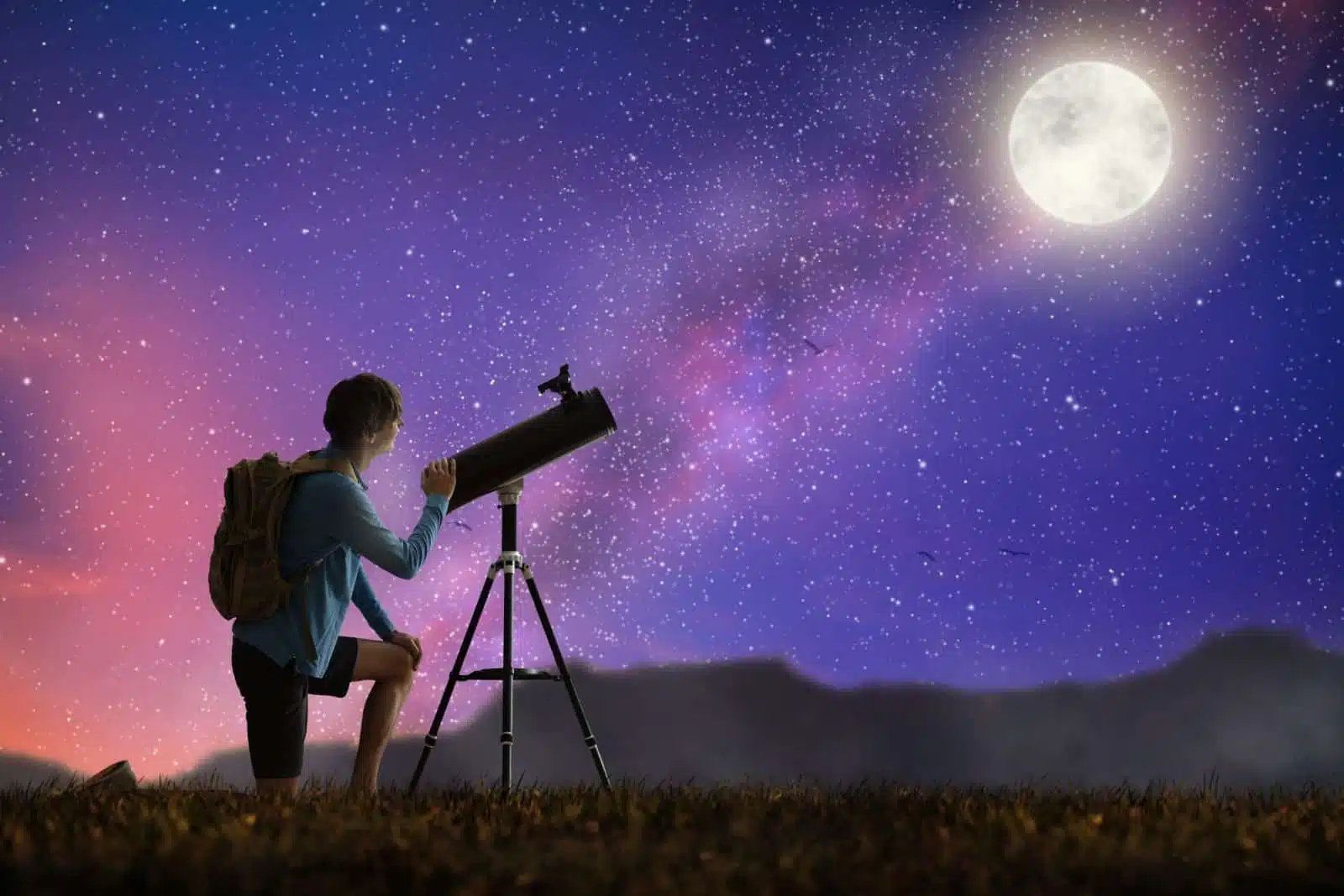
Image Credit: Shutterstock / FamVeld
Each of these ten stargazing spots offers a unique setting to explore the wonders of the night sky, promising an unforgettable romantic experience. Whether you’re nestled in the deserts, perched on mountain peaks, or settled on an island, the universe’s vast beauty awaits. Embrace the opportunity to connect with the cosmos and share a moment of awe and intimacy under the stars.
More From The Green Voyage
Top 10 Trending Travel Destinations 2024
6 Essential Banking Apps for International Travel – Managing Your Finances on the Go
Traveling With Kids – 10 Tips to Create Memorable Family Holidays
The post Stargazing Around the World – Romance in the Stars first appeared on The Green Voyage.
Featured Image Credit: Pexels / Yuting Gao.
For transparency, this content was partly developed with AI assistance and carefully curated by an experienced editor to be informative and ensure accuracy.
